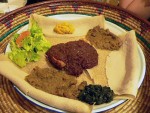We mean: outside of Noma. But must the word Noma be in every title of every article about Copenhagen dining?
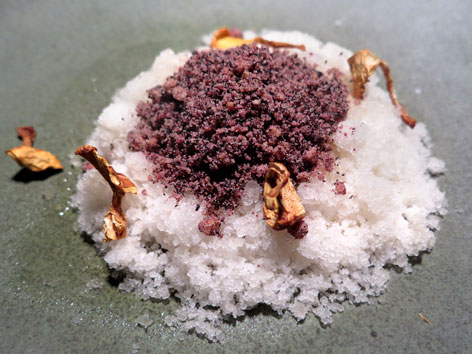
Dessert at Relæ
To many an eater, Copenhagen means Noma, chef-owner René Redzepi’s temple to hyper-local Nordic ingredients, and the restaurant that’s topped the list of the S.Pellegrino World’s 50 Best Restaurants for four of the past five years. But for those who cannot secure one of its 45 highly sought-after seats—or shell out the US$500 a head or so for its 20-plus courses with wine—there are plenty of other places in which to experience the Danish capital’s superstar rise to gastronomic fame. Copenhagen, you see, has had its culinary landscape transformed by the rise of Noma, not only in the creation of a so-called New Nordic cuisine—whose hallmarks include foraged or otherwise regional (and sometimes raw) ingredients served with technical precision in surprising, creative ways—but also in the trickle-down effect that the restaurant’s runaway success has had in inspiring other chefs, many of whom spent time in Noma’s kitchen at one point or another.
Last month, Scott and I booked our flights to Copenhagen too late to even have a chance at getting into Noma. We mourned this briefly, but then considered our budget and allowed a sigh of relief. We could reserve dinner at three other restaurants that week, better understand the city’s hot new dining scene, and actually afford a babysitter for about the same cost. What we didn’t expect was to blown away by all three of those “alternate” restaurants, and leave Copenhagen wanting more. This is where we went.
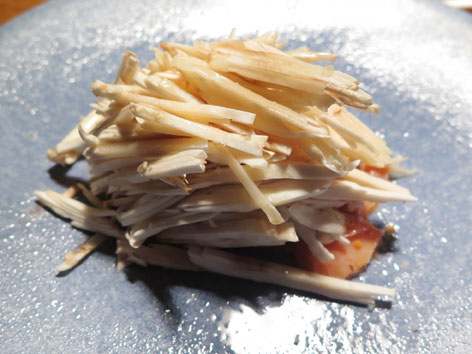
Relæ's trout, cooked in chicken fat and topped with local chanterelles
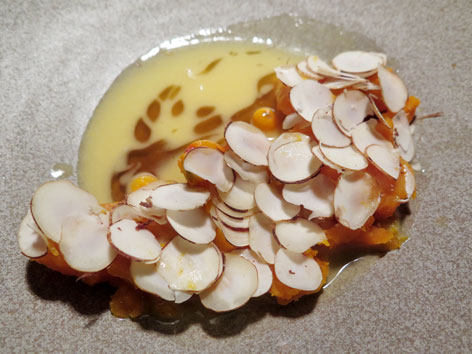
Hokkaido pumpkin with hazelnuts and sea buckthorn
Relæ
So, that World’s 50 Best Restaurants list? It actually ranks 100 of the world’s top restaurants, and this spot lands at a respectable no. 53 (a third Copenhagen restaurant, the pricier Geranium, clocks in at no. 42). At Relæ, whose chef, the Sicilian-born, Denmark-raised Christian Puglisi, is one of those Noma alumni (Spain’s elBulli, too), the feel is more Danish bistro than fancy-pants Michelin-starred restaurant: The kitchen is open, the service super friendly, the linen-less two-top wooden tables close enough together to invite conversation among diners. Menus, cutlery, and napkins are kept in a drawer that each diner pulls out from their table. And sparkling wine is offered within 20 seconds of being seated. How could we say no?
We both opted for the four-course omnivore menu (450 DKK/US$77), which took us from a mind-bogglingly delicious is-this-chicken-or-fish organic trout dish—cooked in chicken fat, sprinkled with bits of fried chicken skin, spread with mustard cream, and piled with local chanterelle mushrooms—to a buttery Hokkaido pumpkin with hazelnuts and sea buckthorn (native orange berries, bright and citrusy), and ending with thinly sliced lamb from the west coast of Denmark, paired with seaweed and Swiss chard. More local mushrooms featured heavily in the surprisingly pleasing, not-so-sweet dessert: creamy chanterelle mousse, blackcurrant and black trumpet mushroom crumble, and dried chanterelles over apple juice granita. This meal was four stellar courses plus an amuse-bouche so good we had to request a second (our server happily obliged) and limitless sourdough bread baked at Relæ’s new sister bakery, Mirabelles, served with Sicilian olive oil—one of the chef’s little Italian shout-outs on the otherwise unmistakably Scandinavian menu.
Maybe it’s the incredible, mostly organic food, or the restaurant’s unpretentious, minimalist style, or its hip Nørrebro address—Relæ was among the first wave of new businesses on Jægersborggade, a once-dodgy street now lined with popular restaurants, bars, art galleries, and vintage shops—but something about this place encapsulates modern-day Copenhagen. It’s a must.
Relæ, Jægersborggade 41, map
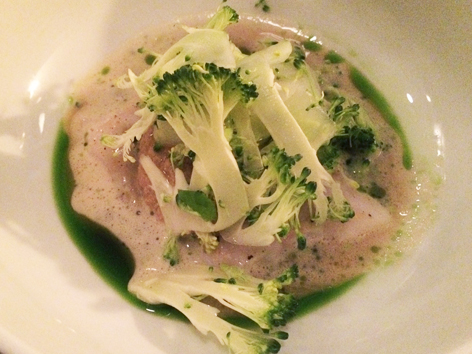
Hake with sunflower seed paste, broccoli, and dill oil at Höst
.jpg)
Handmade pork sausage with mushroom-tarragon soup
Höst
This stunning, two-story restaurant is famed for its award-winning Nordic interior design—or lack thereof, rather, as it’s all raw, stripped-down, light-colored wooden furniture and stark concrete and granite, softened by lambskin and awash in calm gray tones and natural light. The second you walk into Höst’s minimalist, quiet, beautiful space, you know you are, without question, in Denmark.
Fortunately, the food—which also emphasizes the raw, seasonal materials of the Nordic kitchen—lives up to its surroundings. Even better, the three-course, 295-kroner (US$50) dinners we chose turned out be more like six courses, counting all the delicious in-betweens. A barely cooked Norwegian scallop with sorrel and cucumber led into an eggy beer muffin (made with Tuborg, of course), both mere warmups for our favorite dish of the night: tender North Sea hake with sunflower-seed paste, crunchy raw broccoli, and dill oil. Simply spectacular.
We also loved the main course—perfectly roasted chicken with dark-rye breadcrumbs and beetroot two ways, pickled with blackcurrant and raw, shaved into pretty laces—and the midcourse handmade pork sausage that preceded it, accompanied by mushroom bread, lingonberry puree, and mushroom-tarragon soup. The meringue-and-ice-cream dessert was forgettable—a bit clunky given the elegance of everything else we ate—but the yogurt-like treat served before it was excellent, incorporating two of the region’s favorite (recently rediscovered) ingredients: crumbled sea buckthorn and licorice.
Höst’s only real strike was its service, but we believe we just got stuck with the wrong person on the wrong night—a clearly exasperated woman who didn’t have much patience for our questions. If you’re looking for a lot of great food at a good price in a gorgeous, romantic atmosphere, this is your spot.
Höst, Nørre Farimagsgade 41, map
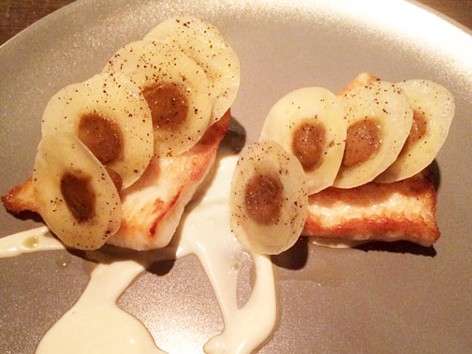
Local turbot with fennel ravioli at Geist
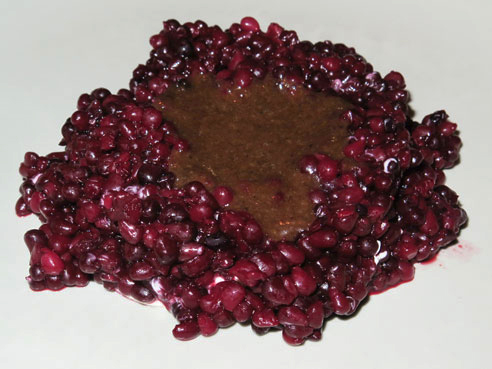
Ollebrod with blackberries
Geist
Right smack in the middle of town, overlooking Kongens Nytorv—a beautiful square that was sadly under massive construction during our visit—Geist is another restaurant with a high pedigree: Danish star chef Bo Bech, who once operated a Copenhagen bakery that made (very popular) sourdough bread and nothing else. For such a seemingly earnest, focused endeavor, Geist sure appears to be the exact opposite: loud, clubby, crowded, and huge, with mirrored-ceiling bathrooms that played on a loop, during our visit, a radio broadcast of an Ali vs. Foreman boxing match.
Don’t let the flashy dining room and lively open kitchen fool you, though—this is serious food here. The small-plates menu reflects a continued love affair with local Nordic ingredients, but it’s a la carte, and it feels near impossible to choose. Our outgoing server helped us narrow down, though we do think she overstated how small these plates were: We hardly were able to finish the five plates plus dessert we chose to share (between 75-190 DKK each/US$12-$32)—of course there was excellent bread, too—and she had recommended we order six.
We left wanting, but unable, to taste more of this creative, wildly delicious menu. Our first two plates demonstrated the artful simplicity of Bech’s style: shaved ribbons of raw zucchini mingled with white almonds in a nutty cream dusted with curry powder—effectively becoming a spicy curry sauce in your mouth—and cured duck was paired with mashed figs on a plate that resembled raw minced beef, but tasted sweet and salty. Our middle veggie course combined sauteed spinach with curly kale, sorrel (which the restaurant grows outside), Gruyere cheese, and potent little bulbs of wild garlic. Then, another act of tasty trickery: perfectly grilled local turbot topped with fennel ravioli, for which rounds of Gruyere act as the “pasta” with licorice in the center. Underneath was a yogurt sauce that tied the dish together.
Our last course was very good—thin peels of fried artichoke over tender, fatty suckling pig in a truffle sauce—but a little rich to be eaten fifth in this gluttonous parade. Still, I needed to try, for dessert, the chef’s take on øllebrød, a traditional porridge made with rye bread and beer. Here its flavor was super concentrated and pooled in a small mountain of soft, ripe, tiny blackberries, over crème fraiche. I couldn’t get enough of it. Two days later, it inspired me to buy a bag of øllebrød mix in a grocery store, which, when prepared, tasted nothing at all like Bech’s version—but a girl can dream.










.jpg)
